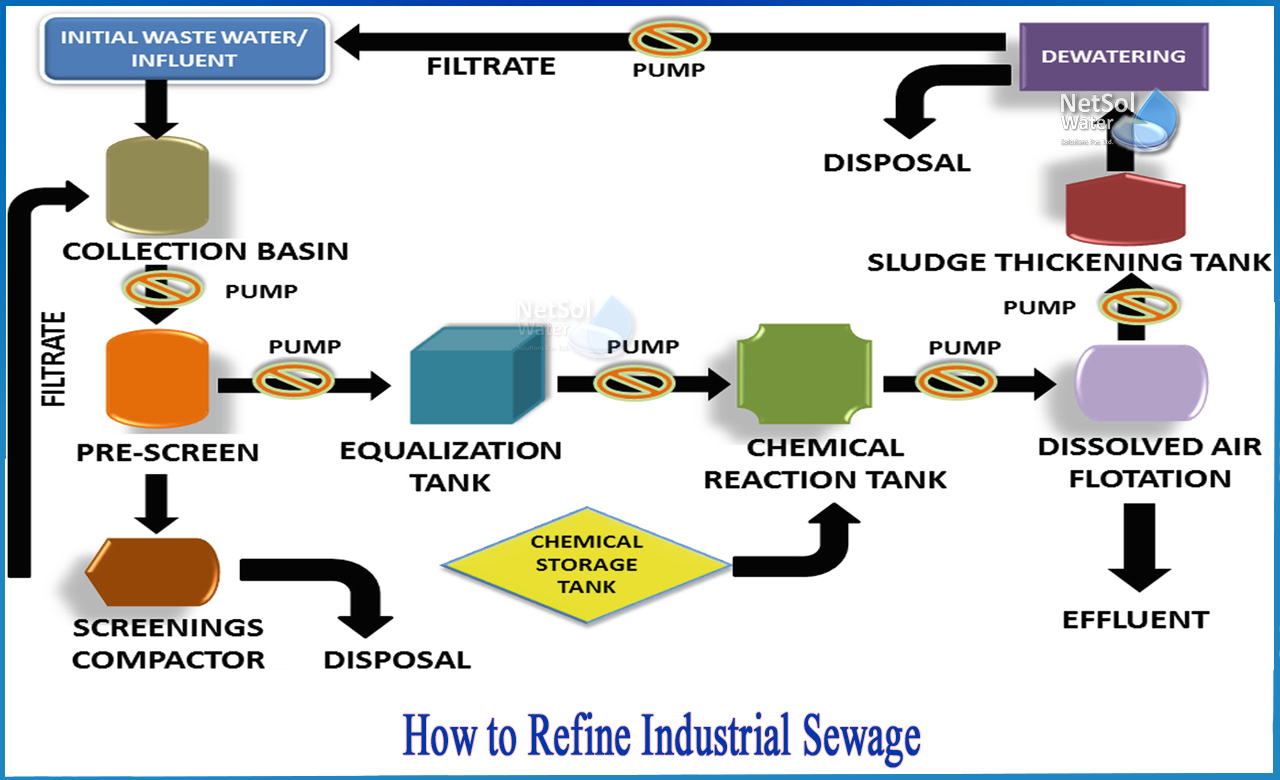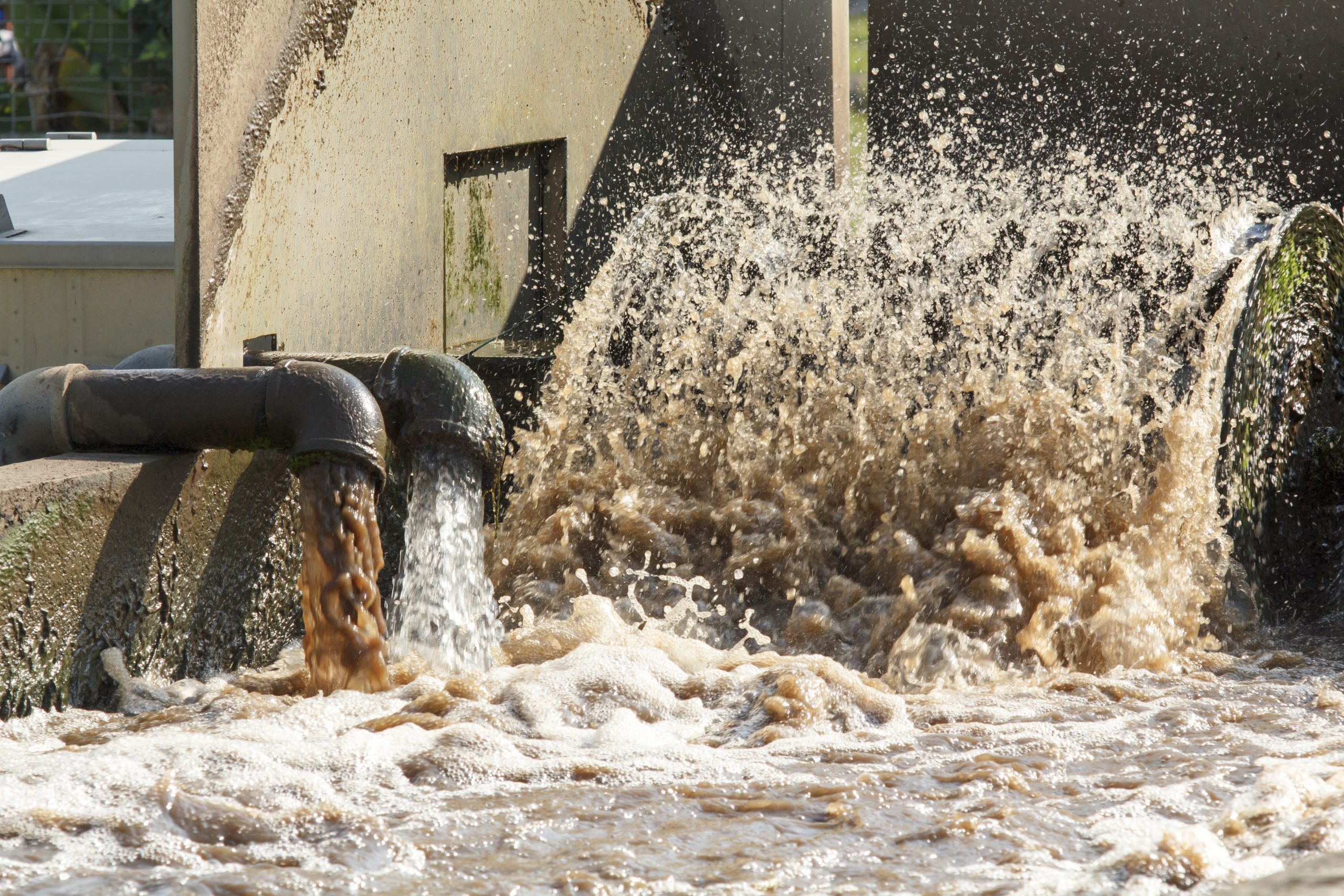Secret Strategies in Hazardous Waste Water Therapy Procedures
The therapy of industrial wastewater is an important facet of environmental management, including a variety of strategies made to mitigate the effect of pollutants. Improvements in modern technologies such as membrane purification and progressed oxidation procedures supply ingenious solutions for improving treatment efficacy.
Physical Therapy Techniques
Just how efficiently can physical therapy methods attend to the intricacies of industrial wastewater? Physical treatment techniques play an essential duty in the initial phases of wastewater administration, focusing mainly on the removal of solids and large particulates. Techniques such as flotation protection, sedimentation, and purification are vital for minimizing the focus of put on hold solids, thereby improving the performance of subsequent therapy procedures.
Sedimentation includes the gravitational settling of solids, allowing for the splitting up of larger materials from the wastewater. This method is specifically efficient in clarifying water prior to chemical or organic treatments.
Additionally, flotation protection methods, which utilize air bubbles to lift put on hold solids to the surface area for elimination, are effective in treating wastewater with high concentrations of fats, oils, and greases. On the whole, physical treatment techniques act as an important initial step in the comprehensive management of commercial wastewater, making certain that the tons on subsequent therapy phases is minimized and improving overall therapy efficacy.
Chemical Treatment Methods
While physical therapy techniques lay the groundwork for effective wastewater monitoring, chemical treatment strategies are vital for addressing the much more complex pollutants commonly discovered in commercial effluents. These methods make use of different chemical agents to precipitate, neutralize, or oxidize unsafe compounds, guaranteeing a more comprehensive removal of pollutants.
One typical technique is coagulation and flocculation, where chemical coagulants such as light weight aluminum sulfate or ferric chloride are contributed to advertise the aggregation of put on hold bits. This process enhances solid-liquid separation, reducing turbidity and boosting water top quality. Furthermore, neutralization processes are used to adjust the pH of wastewater, making use of bases or acids to neutralize acidic or alkaline streams, specifically.
Oxidation-reduction responses play a critical role in degrading natural pollutants and microorganisms. Chemical oxidants like chlorine, hydrogen, or ozone peroxide are utilized to damage down complicated natural compounds, making them less unsafe or extra naturally degradable. Advanced oxidation procedures (AOPs) incorporate several oxidation methods to boost contaminant elimination effectiveness.
Organic Treatment Processes
The performance of wastewater treatment is significantly enhanced by biological therapy procedures, which harness the natural metabolic activities of bacteria to break down natural issue and eliminate contaminants. Industrial Waste Water Treatment. These processes mainly involve aerobic and anaerobic food digestion, each tailored for specific sorts of wastewater
Aerobic therapy procedures utilize oxygen to support microbial development, promoting the break down of natural pollutants right into carbon dioxide and water. Usual methods include turned on sludge systems, where aeration containers promote the blending of wastewater with microbes, and flowing filters, which urge biofilm growth on media surface areas.
Conversely, anaerobic treatment procedures happen in the lack of oxygen, making use of anaerobic bacteria to break down natural matter, leading to biogas manufacturing, a renewable resource resource. Anaerobic digesters are frequently utilized in industrial settings for this function, efficiently minimizing the quantity of sludge while generating valuable biogas.
The option of a biological therapy method relies on wastewater characteristics, treatment goals, and regulatory requirements. The assimilation of biological procedures in wastewater therapy not only improves pollutant elimination effectiveness however likewise advertises sustainability by reducing chemical use and sustaining resource recovery.
Advanced Oxidation Processes

Common AOP strategies include Fenton's ozonation, photocatalysis, and important site reagent. Fenton's reagent, i loved this a mix of hydrogen peroxide and ferrous iron, catalyzes the formation of hydroxyl radicals, making it efficient for dealing with wastewater containing phenolic compounds and various other recalcitrant materials. Ozonation makes use of ozone as a powerful oxidant, capable of weakening a large range of organic pollutants while concurrently disinfecting the effluent. Photocatalysis employs light-activated catalysts, such as titanium dioxide, to enhance oxidation responses and get rid of pollutants.
AOPs use several advantages, consisting of minimized sludge production and the capacity to treat wastewater with high focus of organic toxins. However, the application of AOPs calls for cautious consideration of functional criteria and cost-effectiveness, making sure that these advanced techniques are appropriately integrated right into existing wastewater treatment systems.
Membrane Filtration Technologies

Microfiltration is efficient for eliminating put on hold solids and germs, while ultrafiltration targets smaller sized natural particles and viruses. Nanofiltration connects the gap between ultrafiltration and reverse osmosis, efficiently removing divalent ions and natural substances. Reverse osmosis offers the greatest degree of filtration, made use of largely for desalination and removing mono-valent ions.
Membrane technologies provide many benefits, consisting of reduced power usage contrasted to typical therapy approaches, modular layout for scalability, and the possibility for water recuperation and reuse. Nonetheless, obstacles such as membrane layer fouling and the demand for routine maintenance need to be dealt with to make sure system effectiveness. On the whole, membrane layer filtering innovations represent a vital part of modern industrial wastewater treatment approaches, advertising sustainability and resource conservation in water monitoring.
Verdict
In final thought, commercial wastewater treatment utilizes a varied range of strategies, including physical, chemical, biological, and progressed methods. Continued innovations in these approaches will certainly further enhance the performance and effectiveness of wastewater treatment procedures in commercial settings.
The treatment of commercial wastewater is a crucial element of ecological management, involving a variety of strategies made to mitigate the effect of pollutants.Exactly how properly can physical treatment methods deal with the intricacies of commercial wastewater?Advanced oxidation procedures (AOPs) stand for a cutting-edge method in industrial wastewater treatment, created to properly degrade organic pollutants that are typically resistant to traditional therapy techniques (Industrial Waste Water Treatment).In verdict, commercial wastewater therapy uses a varied variety of strategies, consisting of physical, chemical, organic, and progressed approaches. Proceeded innovations in these techniques will certainly better boost the performance and performance of wastewater therapy processes in industrial setups